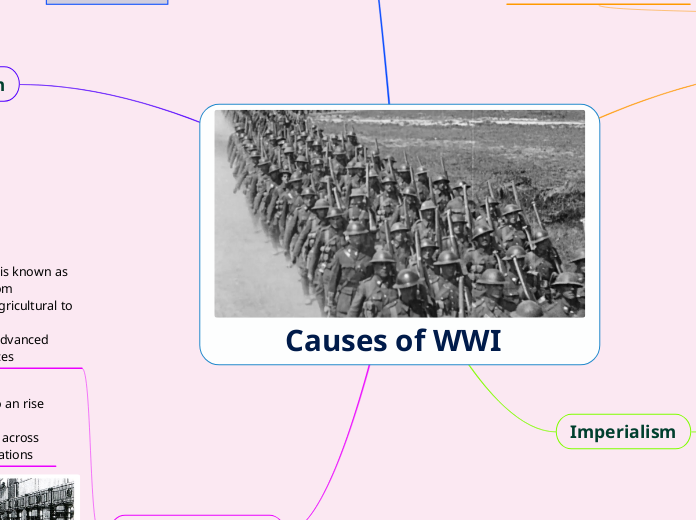by Sophia Small 2 years ago
249
Causes of WWI

by Sophia Small 2 years ago
249

More like this
The manufacturing method was changed by the Industrial Revolution, which made mass production of weapons simpler and faster. As a result, the major countries engaged in an arms race as they aimed to retain or boost their military might by bolstering their armies and fleets.
Nationalism led to the outbreak of World War One as a result of nations' desire to position themselves as the most powerful and developed society on the world.
When large armies were built up, it created lots of tension throughout countries, notably Germany and Russia. This tension pushed the countries to be involved in war and test which countries have the best armies.
The expansion of empires by nations like Britain and France contributed to rising tensions among the European nations.
Germany
Austria - Hungary
Ottoman Empire
Bulgaria
Italy (until 1955)
France
Great Britain
Russia
Italy (1915-)
U.S. (1917)